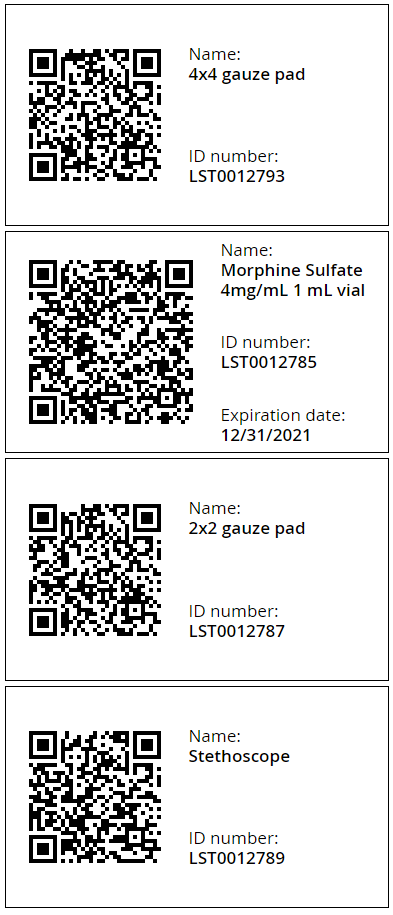- Created by CAE author, last modified on Mar 20, 2024
After accessing the Inventory module, you will land on the Catalog tab where you can view all of your supplies and equipment in a single pane.
The Items tab on the right provides a detailed overview of the current status of your inventory items including their exact quantity, status, category, and storage place.
On the left, you can see the four default Categories of the Inventory module:
![]() Consumables Without Expiration
Consumables Without Expiration
View our related Training videos here.
You can filter your supplies by these Categories or the Cabinets created inside each category:
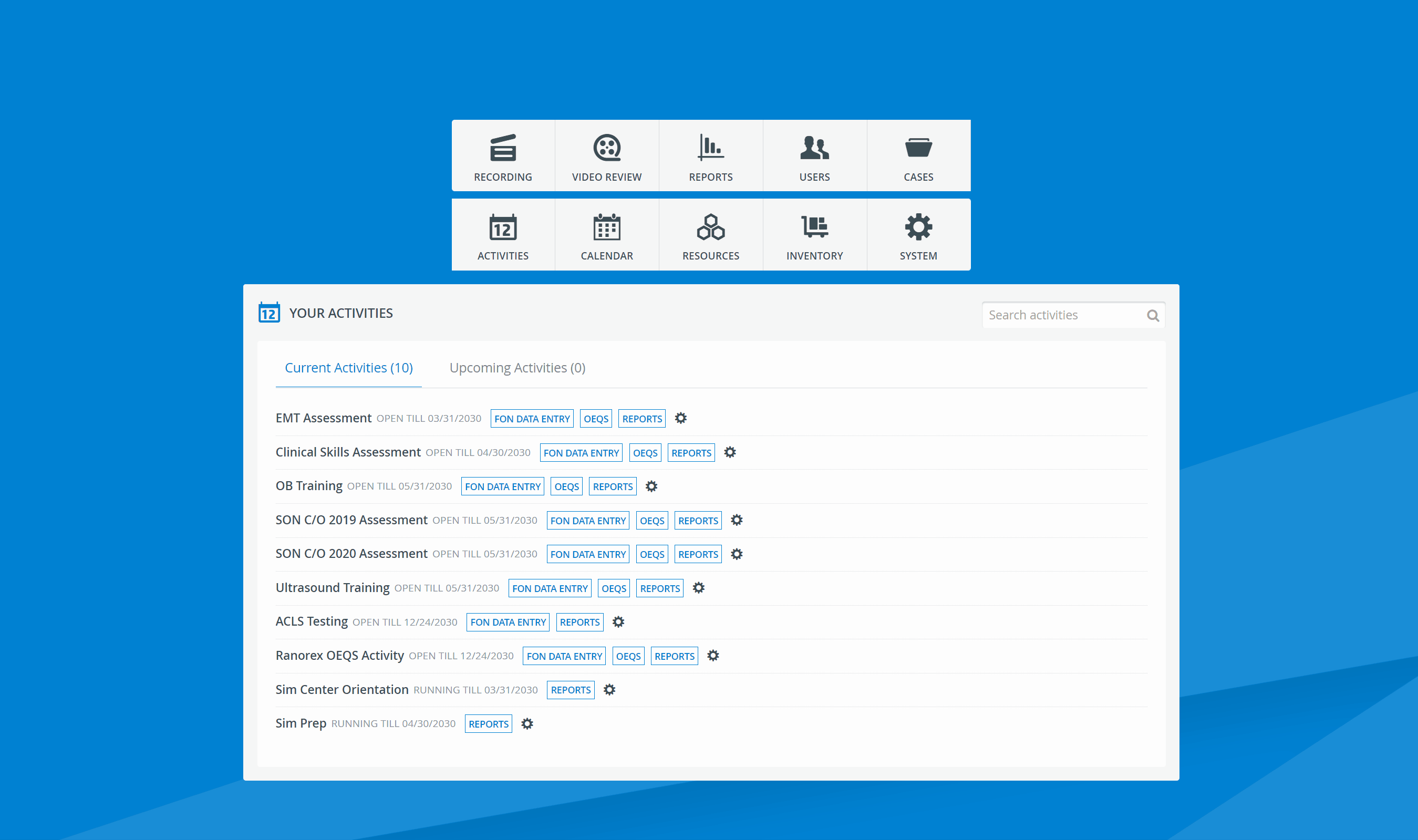
Categories
Categorize new items while adding them to the Catalog. Inventory items are sorted into four Categories.
The categories vary from each other regarding certain item settings to fit the particularities of the different types of medical equipment and supplies you register in your inventory.
Consumables With Expiration 
The items of this category are identified by batches based on expiration dates.
The expiration dates of this type of consumable can be registered upon Check-in (either in the Transactions tab or in the Edit properties pop-up window).
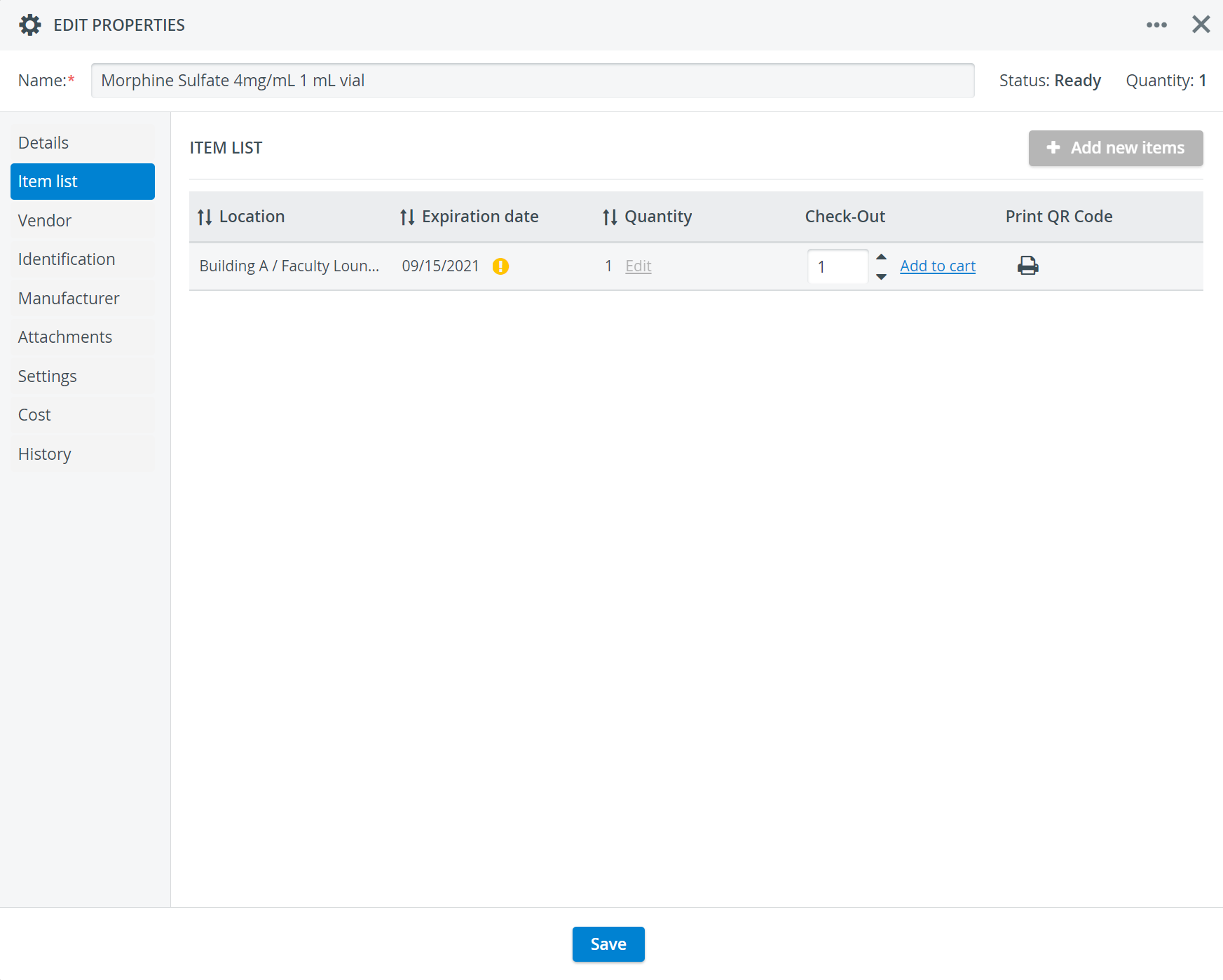
For further details refer to the Consumables With Expiration page.
Consumables Without Expiration 
These items are treated as disposables: the quantity of a consumable item simply decreases after check-out or increases upon check-in:
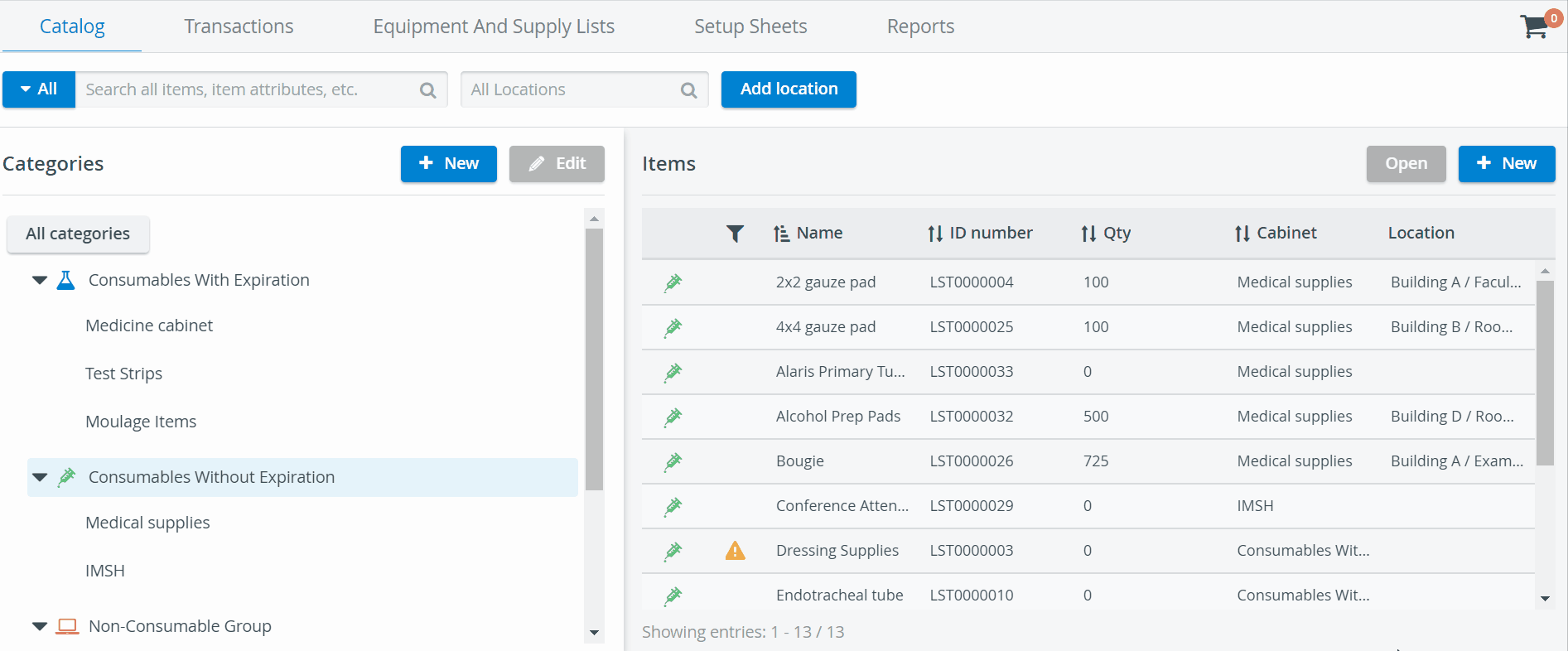
For further details refer to the Consumables without Expiration (Disposables) page.
Non-Consumables
Non-Consumables are durable equipment that need to be returned to stock after use.
The quantity of each non-consumable item is expressed in a ratio: the currently-in-stock amount of the item per the total amount of the item.
In case of lost or broken items, you can always adjust the total quantity of a particular item with the Reconcile transaction.
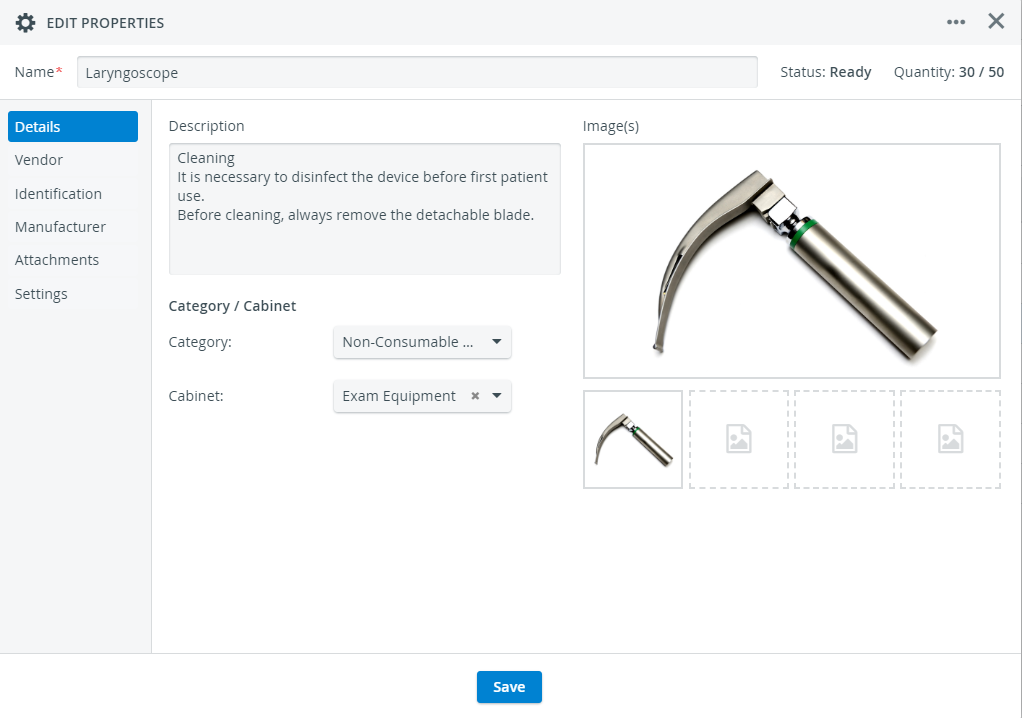
For further details, refer to the Non-Consumables (Durables) page.
Assets
Assets, as your most valuable pieces of equipment, can only be registered one by one in order to keep track of their whereabouts and follow their lifecycle with the most precision possible.

Besides being On Loan ![]() , assets can be sent for Repair
, assets can be sent for Repair ![]() or scheduled for regular Maintenance
or scheduled for regular Maintenance ![]() periods. When checking in an Asset, you can also register the Warranty of the equipment.
periods. When checking in an Asset, you can also register the Warranty of the equipment.
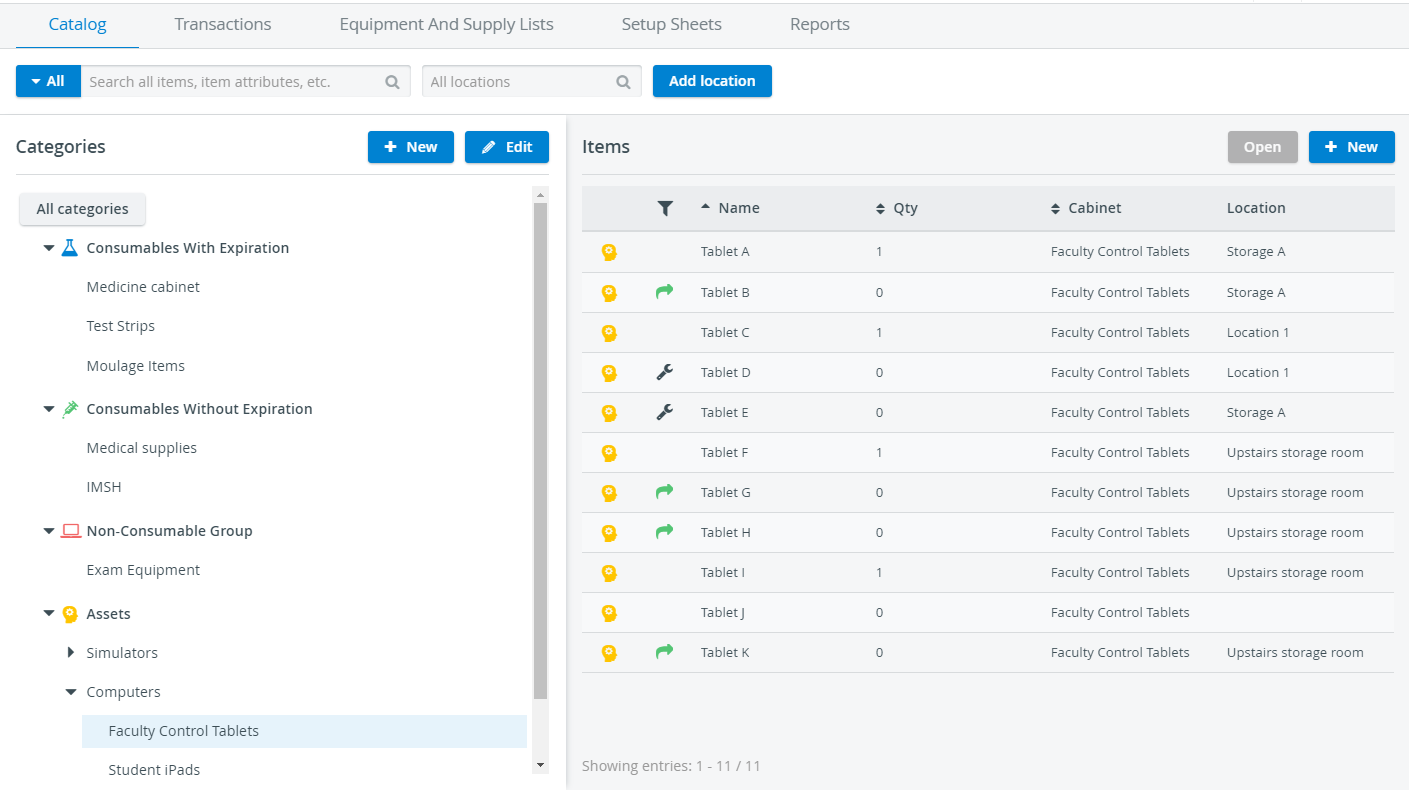
For further details, refer to the Assets page.
Item Properties
Item list
The Item List tab allows Inventory Managers
- to add items to any available location
- to easily increase the quantity at each location or of each batch
- to transfer stock directly from one storage location to another.
These options can be accessed in the Item List tab for each item within the Inventory:
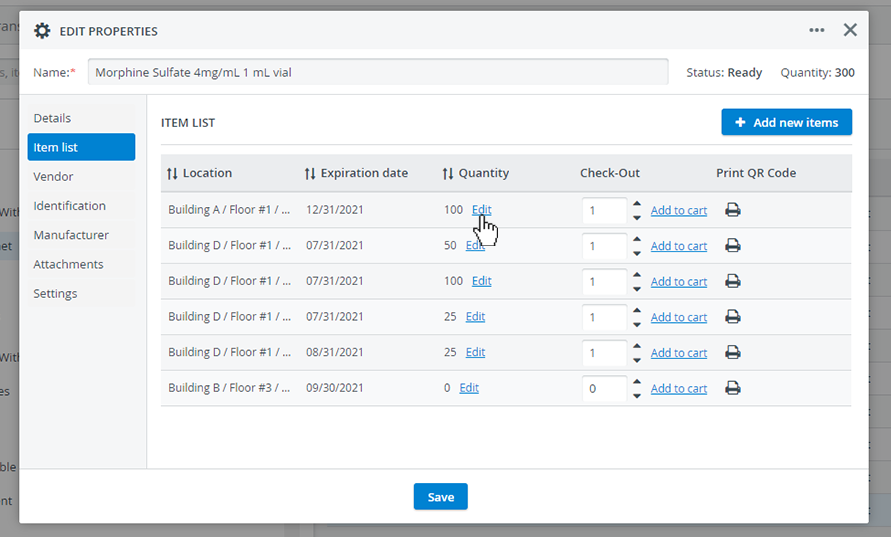
For each item type, you have the Add to cart option available within the Item list. With the help of this option, you can prepare the amount of items set here for check-out, with only one click.
Learn more on the utilization of the Add to cart option on the Check-In Transactions and Check-Out Transactions pages.
Increase Item Quantity Without Check-In
With the help of this new feature, the quantity of consumable and non-consumable items can be increased without creating a cart for check-in. Assets can also be checked in with this method.
To enter the quantity of an item for any location, use the +Add New Item button in the upper right corner in the Item List tab:
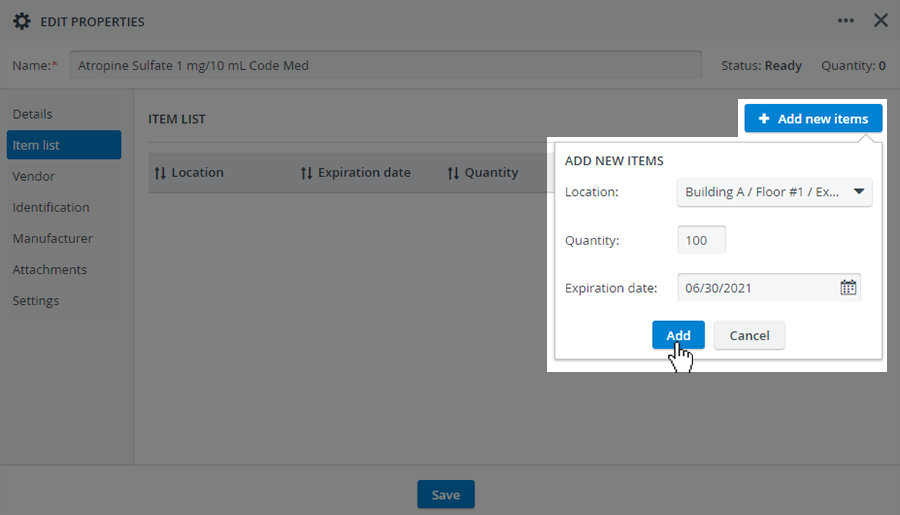
To increment the item quantity for a specific location or batch, access the Add new items option via the Edit button included at each location or batch:

After selecting the option, a popup will open where you can put in the quantity you want to add:
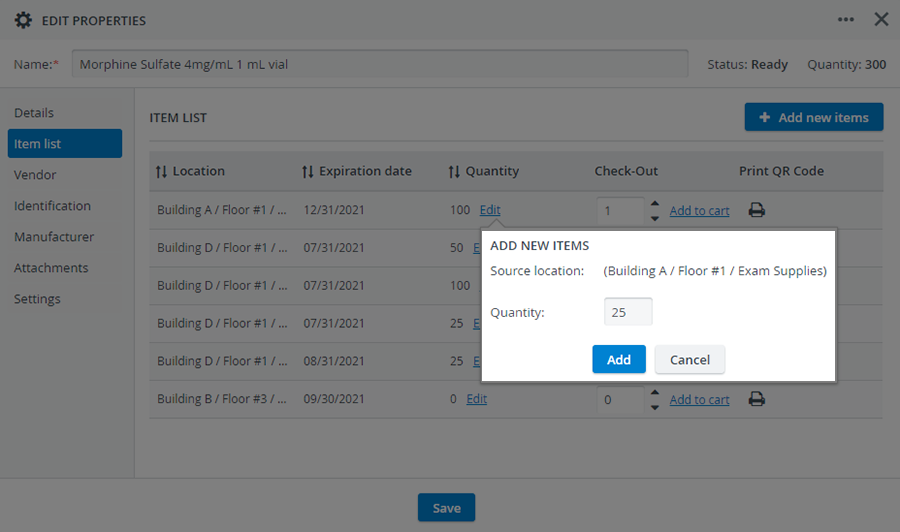
The system will create check-in logs in the transaction history each time you add items in the Item List tab so you can trace back when items were stocked:
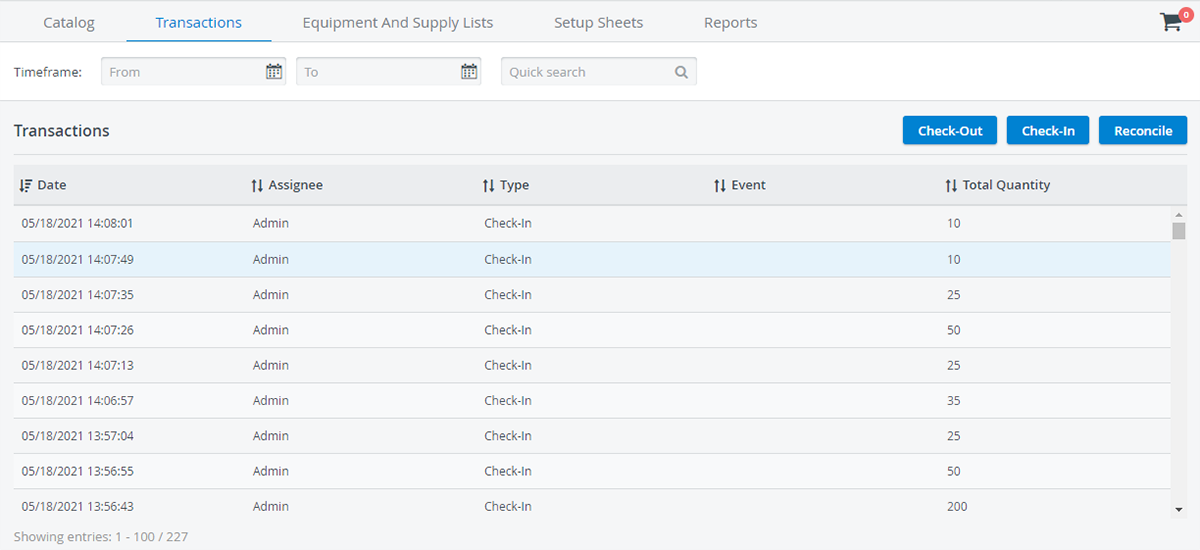
Identification
Every item in your Inventory gets assigned a unique, searchable, system-generated ID number.
- The ID number is searchable in Catalog view
- You can look up/detect items by complete or partial ID numbers in any search field (Check-out search, Equipment and Supply list, etc.)
- You can list items by ID numbers in the Catalog.
- ID numbers are printed under the QR codes.
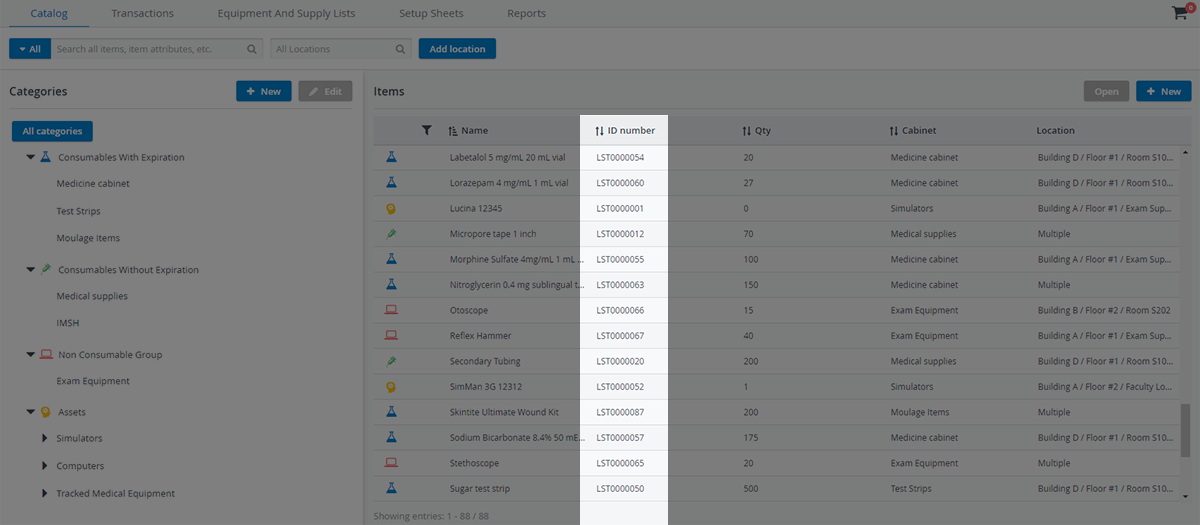
You can find each item's unique ID Number (along with its QR Code and/or Barcode) in the Identification tab.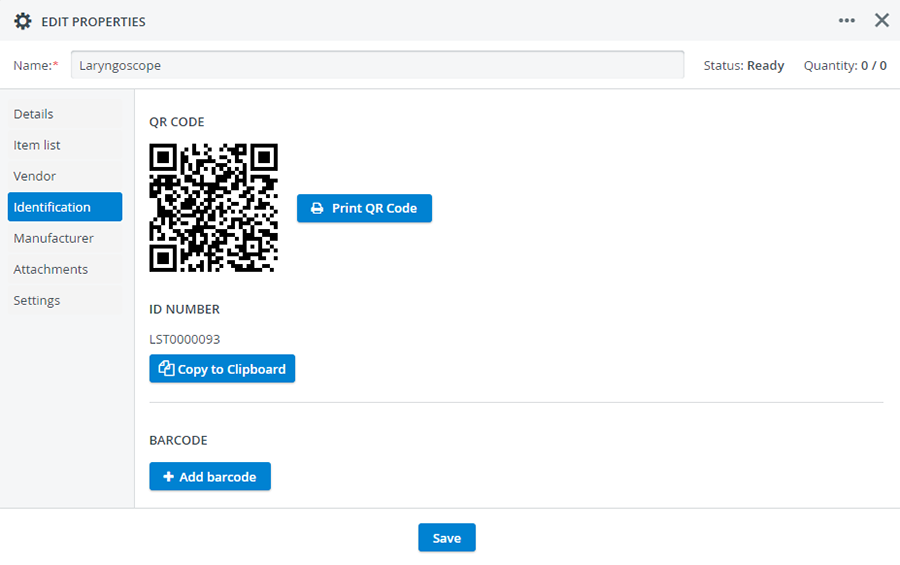
For more information on the Identification options please visit each Category's page under Catalog.
Item Copy
Create a new blank item of the same category with the new Copy feature available at every item in their Item Properties popup.

Items will be duplicated with the following properties: every duplicate item will
- be of the same item category of the original item
- inherit the name of the original item with a new suffix added
- inherit the content of the Details tab of the original item - except for location and warranty details.
- inherit the content of the Settings tab of the original item.
- inherit the content of the Cost tab of the original item - except for the PO number.
- have a unique Item ID and QR-code created
- have a status of 0/0
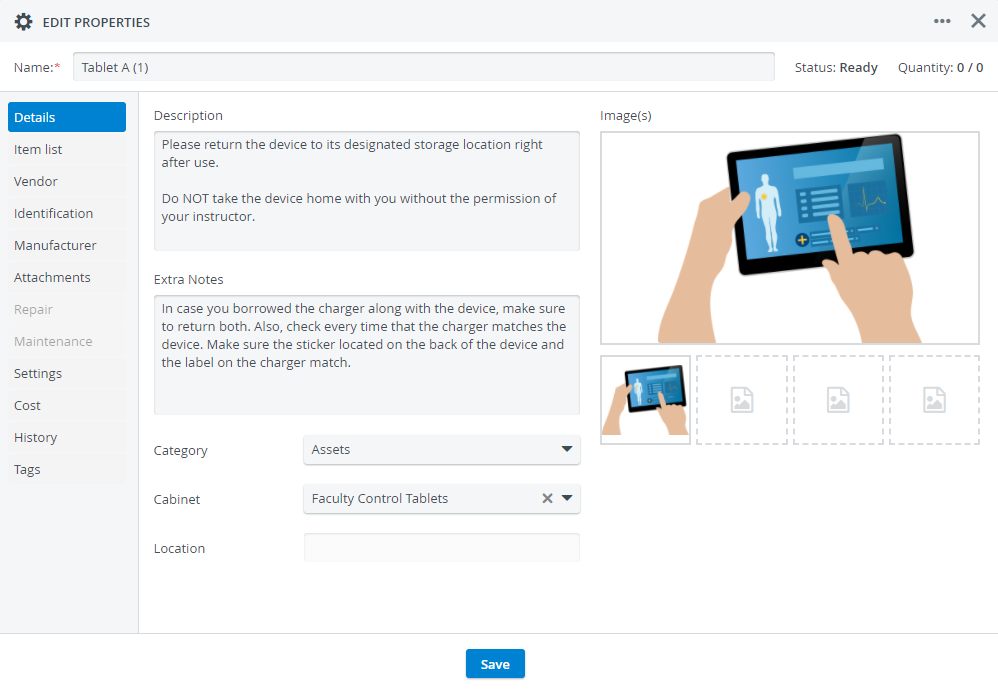
Item History Tab
Obtain the Transaction History of individual items: the History tab located in the item editor gathers the transaction history of the item:
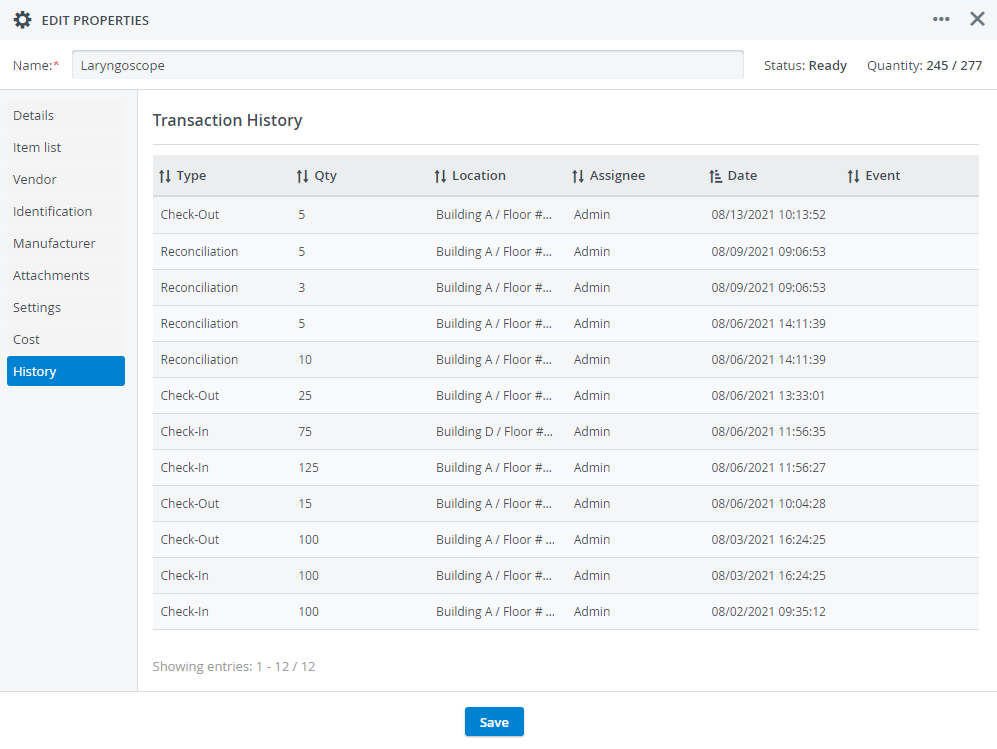
For Assets, the expected return date of the item also appears if the 'Due Date' was defined when checking the asset out:
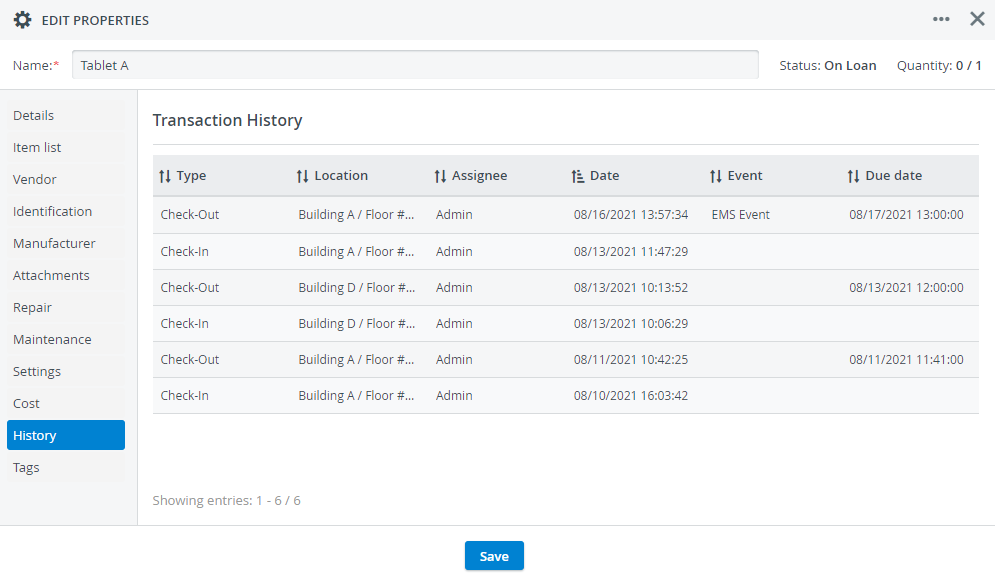
Cost Tab
Users can add the cost (per piece) of each consumable item in the Cost field of the Cost tab. This tab also contains:
- a drop-down to provide the Unit of the item
- a Description field for notes
- and an option to enter Purchase Order Number(s) / PO Number for the item.
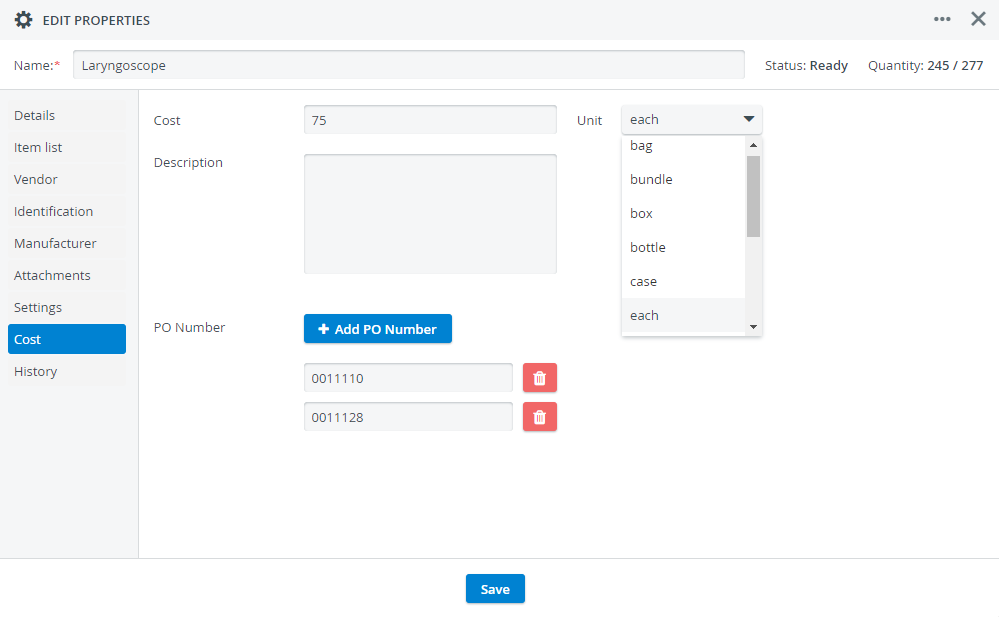
The Add PO Number field is not searchable.
Inventory managers can keep track of the cost of event-related consumable items with the help of the new Cost report:
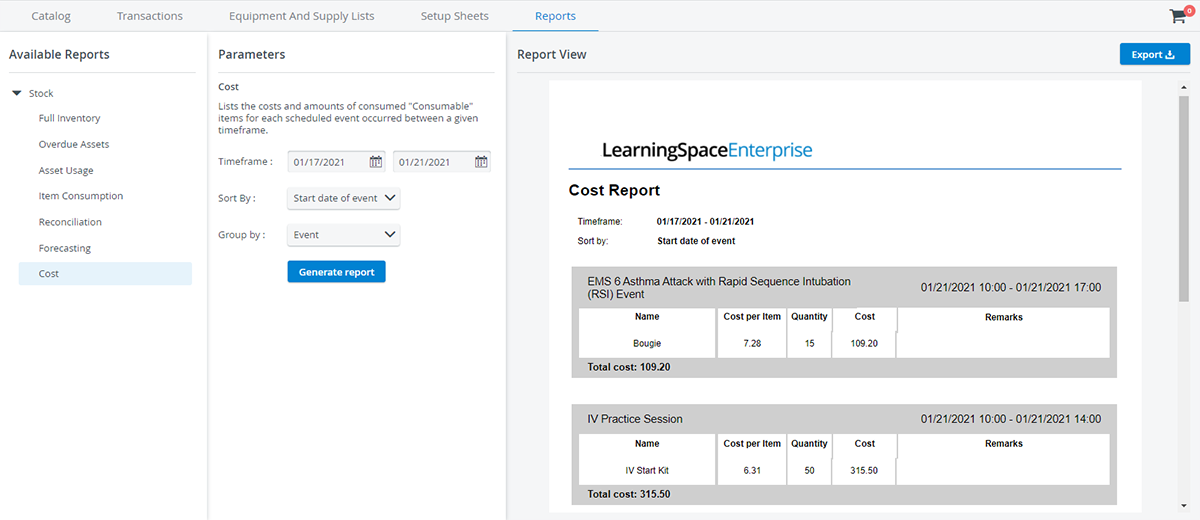
Item Management
While staying on the Catalog tab, use your preferred QR-code scanning method to identify and open your item in an instant.
After scanning your item, its item editor will open right away, where you can continue with managing details and settings.
Batch QR-Code Printing
Print the QR-codes of multiple items in one go while you are carrying out a transaction:
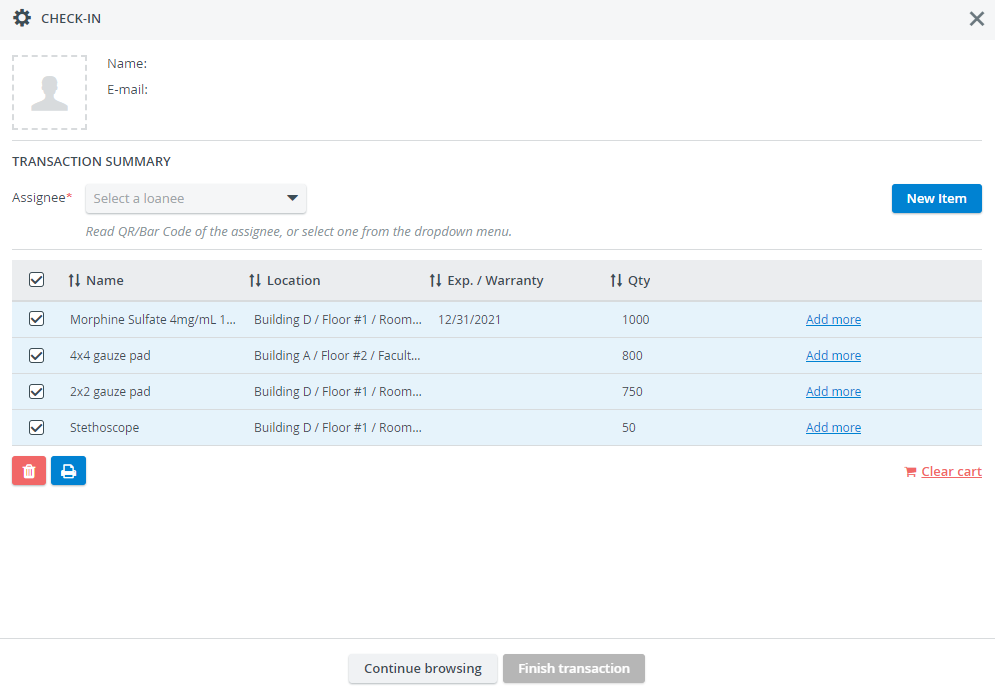
After selecting your items, click on the printer icon to display the preview of the QR-codes:
The label size of the QR Codes can be modified under the General tab of the System manager.
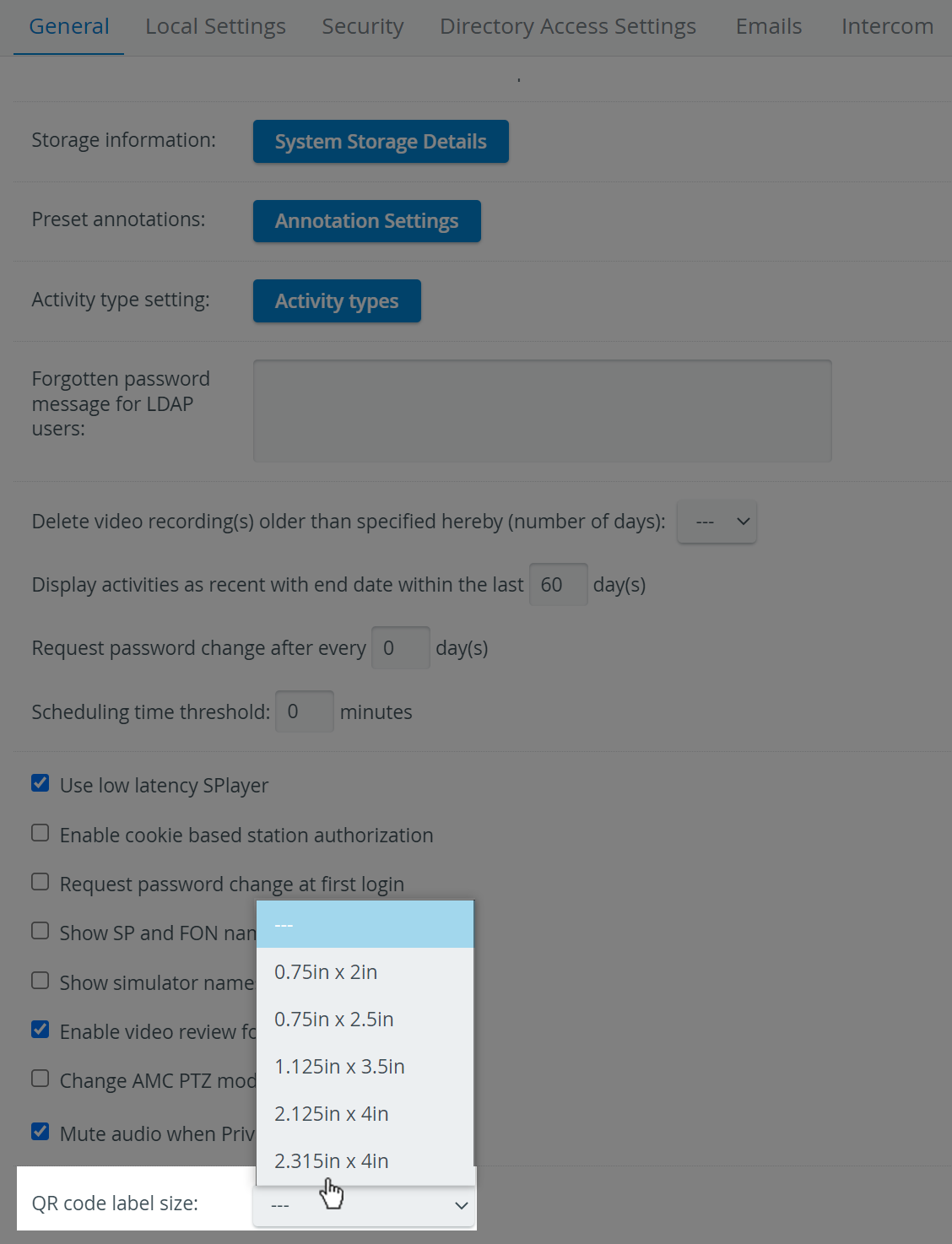
Advanced Search Options
Search for specific items by filtering down to their category, cabinet or, where applicable, the expiration date or warranty.
Consumables With Expiration ![]() items have expiration dates, and Assets
items have expiration dates, and Assets ![]() have their warranty registered upon check-in.
have their warranty registered upon check-in.
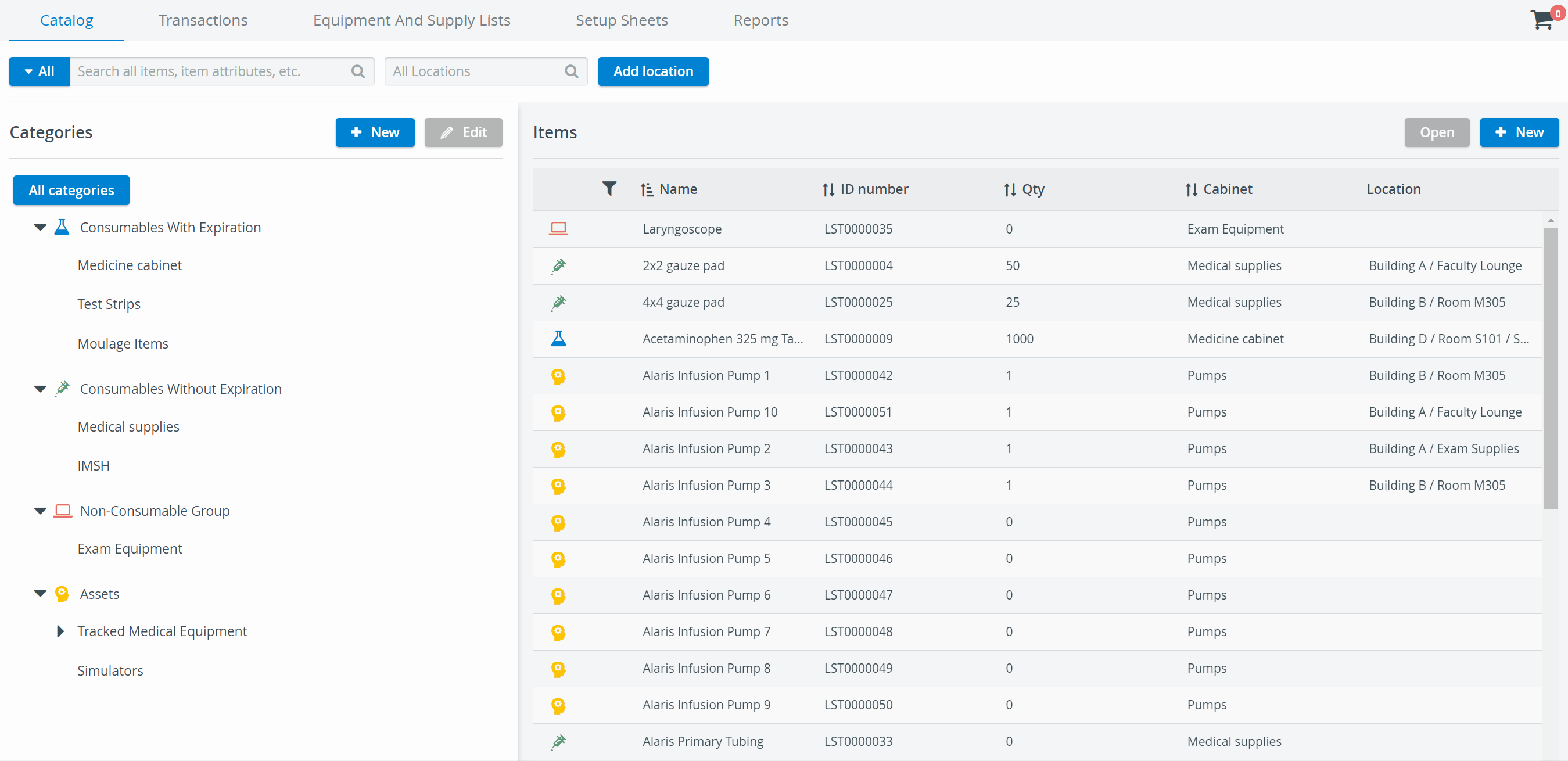
Status Filtering Option
Use the black funnel icon in the Items pane to display items according to their current status.
Display Consumables (both types) and Non-Consumable items that are Ready to be used, or check for items that are running low on by selecting the Low Stock filter.
Note
The Low Stock setting only applies to the Consumables (both types) and Non-Consumable item categories.

Assets can be assigned different statuses (Low Stock does not apply since assets are registered individually):
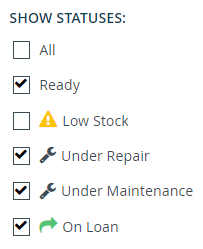
You can apply more than one filter at a time.

If you remove every filter, the category cabinet or subcabinet will not show any results. Click again on the funnel and select a filtering option to display items.
Learn more about the Inventory Manager on our Inventory - How to pages, and watch the Inventory Manager Training Videos.
Related pages
-
Page:
-
Page:
-
Page:
-
Page:
-
Page:
